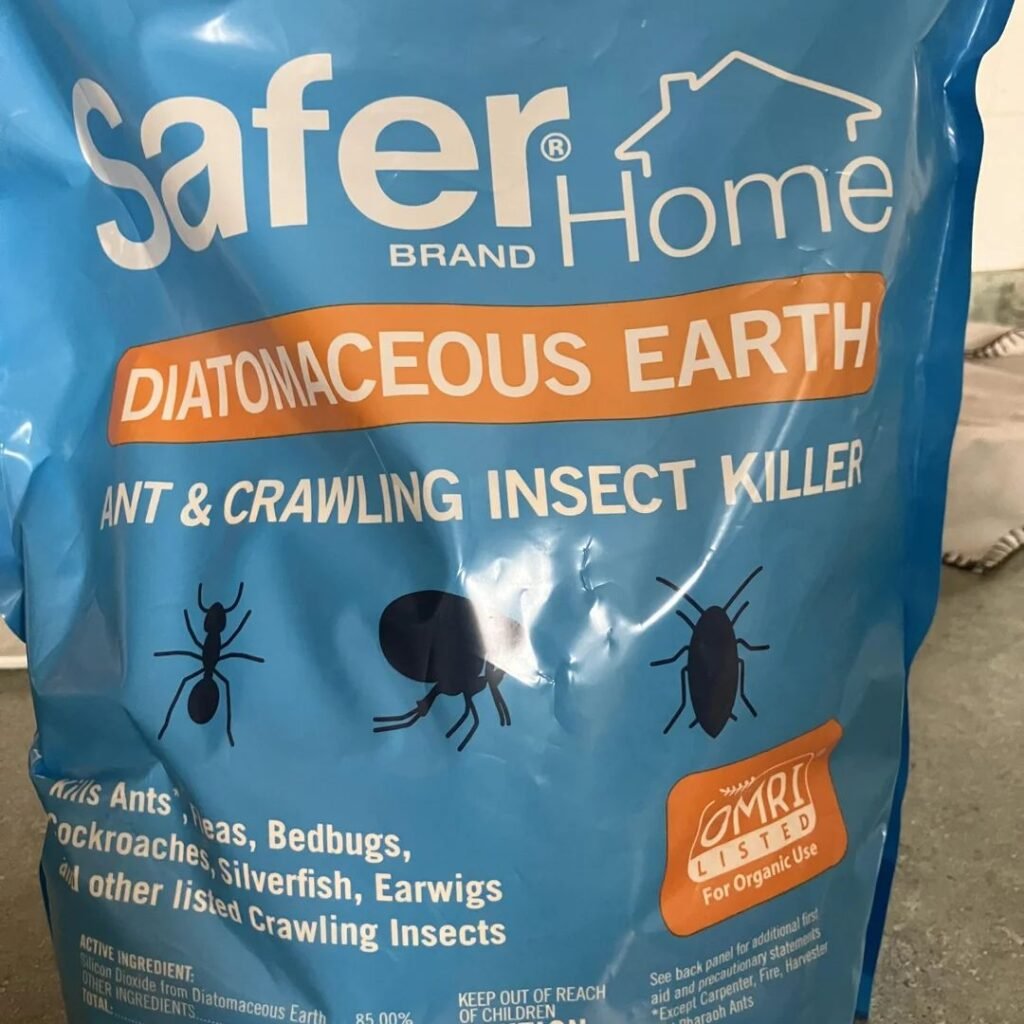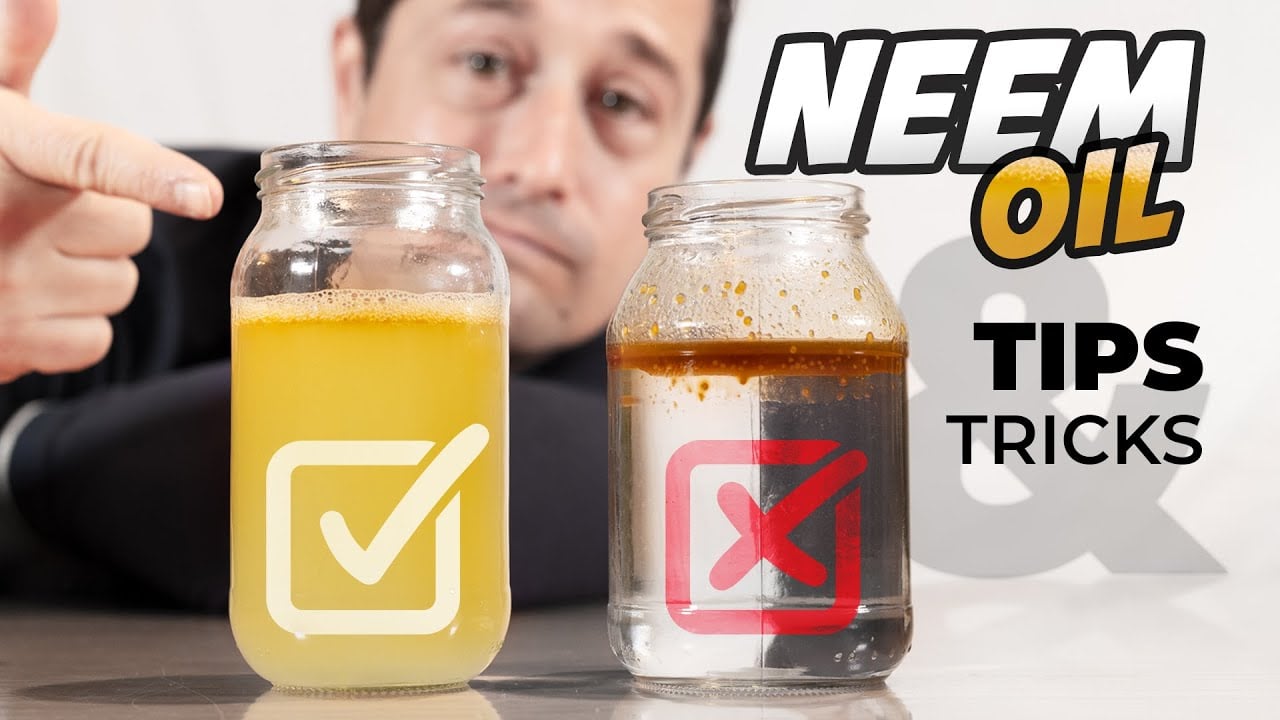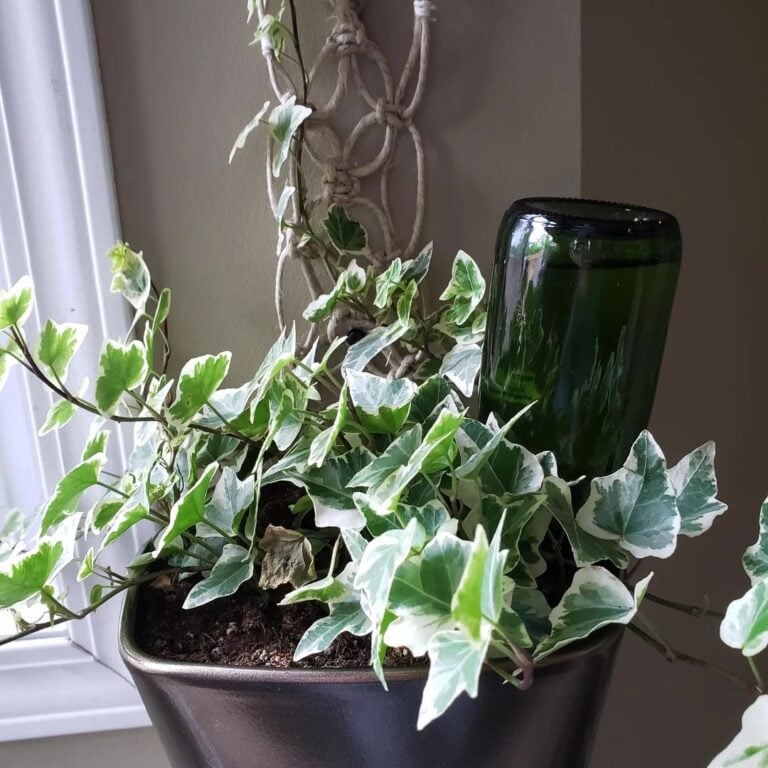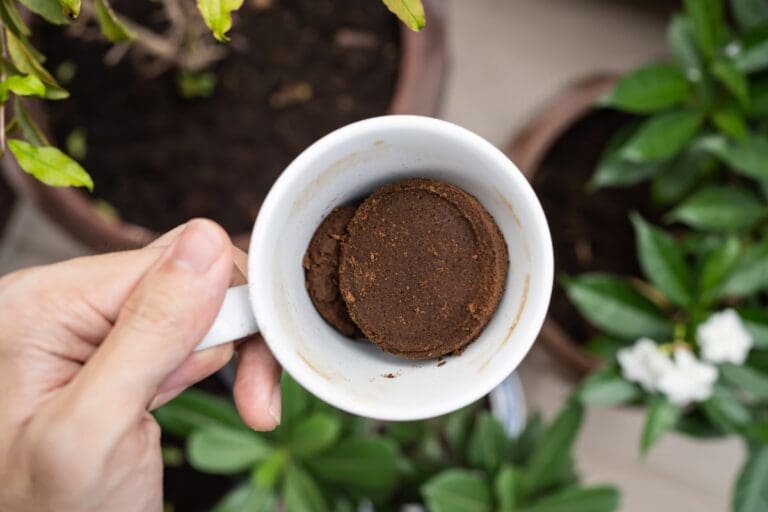7 Natural Pesticides for Fall Indoor Use
As the weather cools down, I start seeing more bugs trying to sneak inside.
Honestly, it gets a bit annoying searching for safe ways to keep them out, especially when I want to avoid harsh chemicals.
Natural pesticides just make sense—they help protect my family and pets indoors. I’m all about simple, effective solutions that don’t take much effort to find.
Please note: Simplify Plants is reader-supported. Some links in the post are affiliate links and I get a commission from purchases made through links in the post.
1) Neem oil spray

I keep coming back to neem oil spray because it’s easy and works against plenty of common bugs. Neem oil comes from neem tree seeds and acts as a natural repellent that’s safe for my indoor plants.
When I spray it right on pests like aphids, spider mites, and whiteflies, it stops their growth and feeding. Neem oil isn’t an instant fix, but it helps keep bugs from spreading.
To make it, I mix about a teaspoon of neem oil with two cups of water and a few drops of mild dish soap. I always give it a good shake before spraying. I try to coat both the tops and undersides of the leaves.
I usually test the spray on a small leaf first, just in case the plant doesn’t like it. If everything looks fine, I’ll spray every few days until the pests finally disappear.
I avoid using neem oil in bright sunlight—it can burn the leaves, and that’s never fun. The good thing is, neem oil doesn’t leave much of a smell after it dries.
Sometimes it even helps with plant diseases like powdery mildew. With regular use, I can keep pests under control without worrying about my family or my pets.
2) Diatomaceous earth

I reach for diatomaceous earth when I spot bugs crawling around in the fall. It’s a fine, white powder made from crushed fossils called diatoms.
You can usually find it at garden centers or even some grocery stores. I sprinkle it near windows, under sinks, or along doorways—wherever bugs seem to hang out.
It’s surprisingly effective against ants, spiders, and even cockroaches. The powder feels soft to me, but for insects, it’s like crawling over tiny shards. It damages their outer shells and dries them out.
I always use food-grade diatomaceous earth. That’s the safest option around pets and people. The pool filter kind? I avoid it—it’s not safe to breathe or touch.
Using it is pretty simple, but I do wear a mask when spreading the powder so I don’t breathe it in. I dust a thin layer where bugs come in, then vacuum it up after a few days along with any unlucky insects.
Diatomaceous earth doesn’t work instantly. I usually give it several days and make sure every little crack gets a light coating.
If I’m dealing with a lot of bugs, I’ll repeat the process. Moisture makes it less effective, so I reapply after cleaning or if it gets wet.
I like that it’s chemical-free and doesn’t leave weird smells behind. It feels safer, especially with kids and pets running around.
It’s not sticky or messy if you go slow. I use a small duster or a spoon for better control. Always wash your hands after using it, just to be safe.
Diatomaceous earth is honestly one of my favorite natural solutions. It’s affordable, easy to find, and doesn’t require much effort.
3) Garlic-chili pepper spray

I’m a fan of garlic-chili pepper spray as a natural bug repellent. It’s easy to make at home and barely costs anything.
The strong smell and spice work together to annoy insects, so they pack up and leave. I blend a few garlic cloves and some hot chili peppers with water, then strain out the bits and pour the liquid into a spray bottle.
I always wear gloves—trust me, chili burns can sneak up on you. I spray it on the leaves of my indoor plants or wherever I see bugs gathering.
I skip blossoms and tiny seedlings, since the spray can be a bit intense for delicate plants. The scent is pretty bold at first, but it fades after a while.
It’s surprisingly effective against ants, aphids, and even some spiders. If the problem sticks around, I just reapply every few days.
Testing the spray on one leaf first is a must. I wait a day to make sure the plant’s fine before spraying the rest.
I always wash my hands after. If you get it in your eyes—ouch—rinse right away. Safety first, even with homemade stuff.
This way, I can skip the harsh chemicals and keep my plants and home feeling safer.
4) Insecticidal soap

I find insecticidal soap is a straightforward way to deal with most indoor pests. It’s made from natural plant oils or animal fats mixed with water.
I spray it directly on soft-bodied bugs like aphids, spider mites, and whiteflies. The nice thing is, it doesn’t leave a harsh residue or any weird smells.
When I use it, it breaks down the bugs’ protective coating so they dry out and die, but my plants stay safe. I usually grab a ready-to-use insecticidal soap from the store, but I’ve made a homemade version with about a teaspoon of liquid castile soap in a quart of water.
I avoid soaps with degreasers or synthetic fragrances—they’re not great for plants. I spray both sides of the leaves, making sure to hit the pests directly.
If I see any yellowing or leaf burn, I rinse with plain water. I don’t spray in direct sunlight or on super hot days, just to be careful.
Insecticidal soap is gentle and pretty effective for most indoor gardens. It’s a solid part of my fall pest control routine.
5) Horticultural oil
I turn to horticultural oil to control pests inside during fall. It’s made from highly refined petroleum or plant oils.
When I spray it on, it smothers soft-bodied insects like aphids, spider mites, and whiteflies. It’s gentle on most indoor plants, which is a relief.
I make sure to coat both the tops and undersides of the leaves. The oil works by blocking the bugs’ air holes, so they can’t breathe.
Sometimes the leaves look a bit shiny after, but that’s normal. Before going all in, I test it on a leaf or two. If there’s no damage after a day, I keep going.
I avoid using it when the room’s really hot or if the plant’s in direct sunlight. Always follow the label for dilution—it’s important for safety.
Horticultural oil works best when you actually see the pests, so I check for webs or sticky spots. I’ll repeat every couple of weeks if I need to.
If you’re looking for a gentle, effective option for your indoor garden this fall, horticultural oil is worth a try.
6) Pyrethrin-based spray
I keep pyrethrin-based sprays around for bugs hiding in corners during fall. Pyrethrin comes from chrysanthemum flowers and is a natural way to deal with all sorts of indoor pests like ants, flies, and mosquitoes.
These sprays work fast. When I use them, bugs usually stop moving almost right away. Pyrethrin messes with their nervous system, so they don’t stand much chance.
I’m careful to follow the instructions on the label. Even though it’s plant-based, too much isn’t good, and I avoid breathing it in.
I target just the problem spots and steer clear of pets, food, and water. Pyrethrin breaks down quickly in sunlight, so there’s less risk of buildup indoors, but I still crack a window open after spraying.
I find it handy for small infestations, but if things get out of hand, I combine it with other steps like cleaning and sealing cracks. A tidy home helps keep bugs from coming back.
If someone in the house has allergies or asthma, I’m extra careful—spraying when they’re not around and airing out the room. Using pyrethrin safely helps me feel better about pest control without all the harsh chemicals.
7) Soap and water solution

I’m a big fan of the classic soap and water solution for indoor pests in the fall. It’s easy, safe, and I’ve already got what I need in the kitchen.
I just add a few drops of liquid dish soap to a spray bottle filled with water, shake it up, and spray it on pests like aphids, mites, and whiteflies.
The soapy water breaks down their outer layer, which stops them from moving or feeding. It usually works in a few hours.
I always test it on a small patch first, since some plants can be sensitive. Too much soap isn’t better—just a few drops per bottle is enough.
After a few hours, I’ll wipe the leaves with a damp cloth to remove both the soap and any dead bugs. It keeps my plants looking good.
If bugs keep coming back, I just reapply every few days. The soap only works when it actually touches the bugs, so regular attention matters.
With kids and pets around, I like that this solution is free of harsh chemicals. It feels safer for everyone.
It’s best for soft-bodied bugs. If I’m dealing with tougher pests, I might need to try something else.
How Natural Pesticides Work Indoors
Natural pesticides help me manage indoor pests with plant-based or mineral ingredients. They each target bugs in their own way and usually break down quickly in my home.
Mode of Action
Natural pesticides use different methods to control pests indoors. Some block insects’ breathing pores.
Others damage their outer shells. Oils like neem oil or peppermint oil can mess with bugs’ senses, making it tough for them to eat or breed.
A popular example is diatomaceous earth. It scratches and dries out the bodies of crawling insects like ants or cockroaches.
Soap sprays break down the protective coating on soft-bodied pests. That causes them to dehydrate and die.
Most natural pesticides need direct contact with the pest to work. I have to spray or apply them right where I spot bugs, instead of just treating a whole room and hoping for the best.
Benefits Compared to Synthetic Pesticides
I like that natural pesticides usually contain ingredients I can actually pronounce, like plant oils or minerals. This makes them safer to use around kids, pets, and food areas—at least when I follow the directions.
Natural options don’t leave long-lasting chemical residues everywhere. Ventilating my home after treatment is easy, and most odors fade pretty quickly.
Pests are less likely to develop resistance since the ingredients act in different ways. That’s a relief, honestly.
Many synthetic products kill both pests and helpful insects. Natural options help me target just the pests, so I keep beneficial insects safer.
Using natural pesticides can reduce risks to my indoor air quality and, well, my peace of mind.
Safety Tips for Indoor Application
Safety is my top priority when using natural pesticides inside my home. I want to keep my living space healthy for both my family and pets by following safe practices.
Proper Storage and Handling
I always store natural pesticides in clearly labeled containers. This helps me avoid confusion and accidental misuse.
I keep all products out of direct sunlight and away from heat. That way, the ingredients don’t break down or start leaking.
I wear gloves when mixing or applying any pesticide, even if they’re natural. It just keeps my skin protected from any irritation.
If I spill anything, I clean it up right away using soapy water and disposable cloths. No sense letting it sit.
I follow instructions on the label exactly and never mix different products unless it’s specifically recommended. If I have leftovers, I store them tightly sealed, out of reach of children and pets.
I never transfer pesticides into food or drink containers. That just seems like asking for trouble.
Pet and Child Safety Considerations
I always apply pesticides while my pets and kids are out of the room. After application, I let surfaces dry completely before letting anyone back in.
I check that windows are open or use a fan to keep the air fresh while I work. It’s just a habit now.
All products are locked away after use. I remind everyone at home not to touch treated areas until I say they’re safe.
For extra safety, I create a quick checklist:
- Are pets and children away?
- Have I cleaned up any residue?
- Did I re-lock cabinets?
By staying alert and organized, I keep my home safe during pest control.
Frequently Asked Questions
I often get asked about simple, natural ways to keep indoor plants bug-free during fall. I use common household items and store-bought sprays that protect my plants and keep my living space safe.
What are some effective organic insecticides for my indoor garden this fall?
I’ve found that neem oil spray, insecticidal soap, and diatomaceous earth work well for most indoor plant pests. These are safe to use around people and pets when used correctly.
I always follow the label instructions. That’s important.
How can I make a homemade bug spray that’s safe for my indoor plants?
I mix one teaspoon of mild liquid soap with one liter of water as a gentle spray. Sometimes I add a few drops of neem oil for extra strength.
I spray leaves lightly and avoid over-soaking. It’s simple and works for me.
Are there any DIY solutions for gnats on my indoor plants?
For gnats, I use a thin layer of diatomaceous earth on the soil’s surface. I also let the soil dry a bit between waterings because gnats like damp dirt.
Sometimes, I use sticky traps too. They’re surprisingly effective.
Can vinegar be used as a natural insecticide for plants I keep indoors?
I don’t use vinegar on my plant leaves because it can burn them. Vinegar is best kept away from most indoor plants.
It may be helpful for cleaning pots or surfaces, but not for spraying on the plants themselves. Better safe than sorry.
What natural pesticides can I use on the soil of my indoor plants?
I rely on diatomaceous earth sprinkled on top of the soil to control pests like fungus gnats. Cinnamon powder can help manage mold, and it is gentle on roots.
Can I use natural pesticides for vegetables on my indoor houseplants too?
Yep, most natural pesticides like neem oil or insecticidal soap are usually fine for both veggies and your favorite indoor plants. I’d still recommend glancing at the label just to make sure they’re actually meant for indoor use—better safe than sorry, right?
Recommended Garden Supplies
| Product Image | Our Recommended Gardening Supplies | Check Offers! |
|---|---|---|
Top Top
Top
Top
Top
Top
Top
Top
Top | rePotme Houseplant and Tropical Classic Potting Soil Mix | Check Offer On Amazon |
 Top
Top
Top
Top
Top
Top
Top
Top | Espoma Organic Indoor Plant Food | Check Offer On Amazon |
 Top
Top
Top
Top
Top
Top
Top
Top | GooingTop LED Grow Light 6000K Full Spectrum Clip Plant Growing Lamp | Check Offer On Amazon |
 Top
Top
Top
Top
Top
Top
Top
Top | Soil Moisture Meter | Check Offer On Amazon |
 Top
Top
Top
Top
Top
Top
Top
Top | Govee Hygrometer Thermometer, Bluetooth Enabled! | Check Offer On Amazon |
 Top
Top | LEVOIT Humidifiers for Large Room(Best For Plants) | Check Offer On Amazon |
 Top
Top
Top
Top
Top
Top
Top
Top | Upgraded DIY Automatic Drip Irrigation Kit, 15 Potted Houseplants Support | Check Offer On Amazon |
 Top
Top
Top
Top
Top
Top
Top
Top | Stainless Steel Heavy Duty Gardening Tool Set | Check Offer On Amazon |
 Top
Top
Top
Top
Top
Top
Top
Top | Bonide Insecticidal Soap | Check Offer On Amazon |
 Top
Top
Top
Top
Top
Top
Top
Top | Bonide 32 oz Spray Neem Oil for Organic Gardening | Check Offer On Amazon |
 Top
Top
Top
Top
Top
Top
Top
Top | Garden Safe Fungicide | Check Offer On Amazon |









